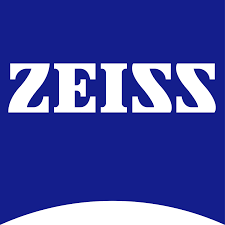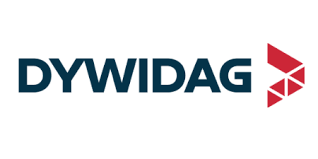Fingerprint Sensor Market Report
Published Date: 15 December 2025 | Report Code: fingerprint-sensor
Fingerprint Sensor Market Size, Share, Industry Trends and Forecast to 2033
This report provides a comprehensive analysis of the Fingerprint Sensor market, including market size, growth forecasts, segmentation, and insights into key regions. It covers the industry landscape from 2023 to 2033, offering insights into technological advancements and market trends.
| Metric | Value |
|---|---|
| Study Period | 2023 - 2033 |
| 2023 Market Size | $14.50 Billion |
| CAGR (2023-2033) | 10.2% |
| 2033 Market Size | $39.69 Billion |
| Top Companies | Synaptics Inc., Qualcomm Technologies, Inc., Fingerprint Cards AB, Lumidigm (HID Global) |
| Last Modified Date | 15 December 2025 |
Fingerprint Sensor Market Report (2023 - 2033)
Fingerprint Sensor Market Overview
Customize Fingerprint Sensor Market Report market research report
- ✔ Get in-depth analysis of Fingerprint Sensor market size, growth, and forecasts.
- ✔ Understand Fingerprint Sensor's regional dynamics and industry-specific trends.
- ✔ Identify potential applications, end-user demand, and growth segments in Fingerprint Sensor
What is the Market Size & CAGR of Fingerprint Sensor market in 2023?
Fingerprint Sensor Industry Analysis
Fingerprint Sensor Market Segmentation and Scope
Tell us your focus area and get a customized research report.
Fingerprint Sensor Market Analysis Report by Region
Europe Fingerprint Sensor Market Report:
Europe's fingerprint sensor market starts at approximately $4.26 billion in 2023 and is forecasted to reach $11.67 billion by 2033. Key growth drivers include stringent data protection regulations and growing adoption in financial services.Asia Pacific Fingerprint Sensor Market Report:
In the Asia Pacific region, the fingerprint sensor market size was valued at approximately $2.98 billion in 2023 and is projected to reach $8.16 billion by 2033, showcasing significant growth due to the increasing smartphone penetration and demand for biometric authentication in emerging economies.North America Fingerprint Sensor Market Report:
North America is a leading region, with the market size estimated at $4.74 billion in 2023 and expected to grow to $12.98 billion by 2033, facilitated by advanced technologies and significant investments in biometric systems within urban security and banking.South America Fingerprint Sensor Market Report:
The South American market, valued at $1.35 billion in 2023, is expected to reach $3.70 billion by 2033. The growth is driven by rising security concerns and government initiatives towards digitization.Middle East & Africa Fingerprint Sensor Market Report:
The Middle East and Africa market is valued at $1.16 billion in 2023, projected to increase to $3.17 billion by 2033, influenced by rising demand for cybersecurity solutions amidst increasing digitalization efforts.Tell us your focus area and get a customized research report.
Fingerprint Sensor Market Analysis By Technology
Global Fingerprint Sensor Market, By Technology Market Analysis (2023 - 2033)
The market segmentation based on technology highlights the dominance of optical sensors, accounting for 60.83% market share in 2023, while capacitive sensors and ultrasonic sensors follow with shares of 23.37% and 15.8%, respectively. This variance reflects technological preferences in consumer electronics and security applications.
Fingerprint Sensor Market Analysis By End User
Global Fingerprint Sensor Market, By End User Industry Market Analysis (2023 - 2033)
In 2023, the consumer electronics sector holds the largest market share at approximately 40.94%, with market size estimated at $5.94 billion. The government sector follows with a size of $3.42 billion. The increasing need for security in payment systems in banking services is expected to drive the banking and financial services segment's growth.
Fingerprint Sensor Market Analysis By Form Factor
Global Fingerprint Sensor Market, By Form Factor Market Analysis (2023 - 2033)
Various form factors are employed in the fingerprint sensor market, with modules dominating the market landscape due to their versatility in applications, accounting for 60.83% share in 2023. Touchscreens are also significant, showcasing growing integration in public kiosks and personal devices.
Fingerprint Sensor Market Analysis By Regional Application
Global Fingerprint Sensor Market, By Regional Applications Market Analysis (2023 - 2033)
The application of fingerprint sensors extends across regional geopolitics, commercial needs, and technological demands tailored according to specific regulatory requirements and data protection laws prevalent in those regions.
Fingerprint Sensor Market Analysis By Integration
Global Fingerprint Sensor Market, By Integration Market Analysis (2023 - 2033)
Integrated solutions remain prevalent, constituting 88.16% of the market in 2023, as organizations seek comprehensive security offerings. Standalone solutions, while growing, account for 11.84%, reflecting specific needs for targeted identity verification systems.
Fingerprint Sensor Market Trends and Future Forecast
Tell us your focus area and get a customized research report.
Global Market Leaders and Top Companies in Fingerprint Sensor Industry
Synaptics Inc.:
A leader in human interface solutions, Synaptics is known for its innovative biometric fingerprint sensors integrated into various consumer electronics.Qualcomm Technologies, Inc.:
Qualcomm is a major player in mobile technology, providing robust fingerprint sensing solutions that enhance security features in smartphones and tablets.Fingerprint Cards AB:
Swedish company specializing in fingerprint biometric solutions, Fingerprint Cards AB is renowned for its advanced fingerprint sensors used in smartphones and access control systems.Lumidigm (HID Global):
A part of HID Global, Lumidigm focuses on providing secure authentication through advanced biometric solutions, emphasizing healthcare and finance applications.We're grateful to work with incredible clients.









FAQs
What is the market size of fingerprint Sensor?
The fingerprint sensor market is projected to reach $14.5 billion by 2033, growing at a CAGR of 10.2%. In 2023, the market is valued at $5.94 billion in consumer electronics and is expected to expand across various segments.
What are the key market players or companies in this industry?
Key players in the fingerprint sensor market include major technology firms and sensor manufacturers. Their innovative contributions and competitive strategies are crucial for shaping market dynamics and influencing growth strategies across various sectors.
What are the primary factors driving the growth in the fingerprint sensor industry?
Growth in the fingerprint sensor industry is primarily driven by advancements in biometric technology, increasing demand for secure authentication, and the proliferation of fingerprint-enabled devices in consumer electronics and security systems.
Which region is the fastest Growing in the fingerprint sensor market?
The fastest-growing region in the fingerprint sensor market is Asia Pacific, with a projected increase from $2.98 billion in 2023 to $8.16 billion by 2033, driven by significant technological adoption and consumer electronics expansion in the area.
Does ConsaInsights provide customized market report data for the fingerprint Sensor industry?
Yes, ConsaInsights specializes in providing customized market reports tailored to the fingerprint sensor industry, ensuring businesses receive the most relevant data and insights to support strategic decision-making.
What deliverables can I expect from this market research project?
From this market research project, you can expect comprehensive market analysis, trends, forecasts, segment breakdowns, competitive insights, and detailed regional reports aimed at supporting informed business strategies in the fingerprint sensor market.
What are the market trends of fingerprint Sensor?
Current trends in the fingerprint sensor market include increasing integration in consumer electronics like smartphones, innovations in biometric technologies, and a growing focus on security solutions within various industries such as banking, healthcare, and automotive.
